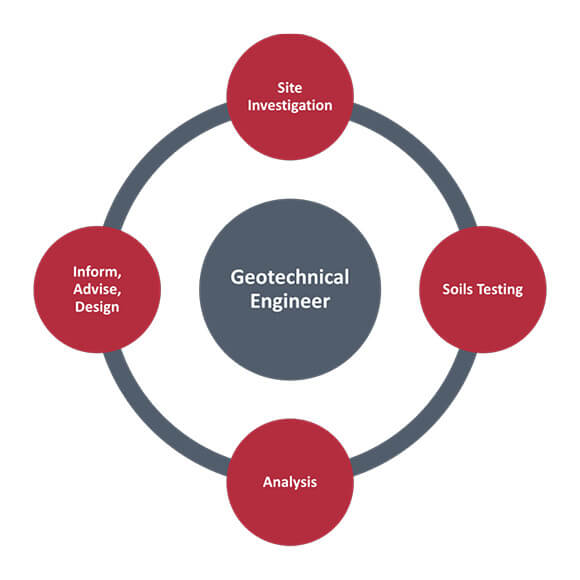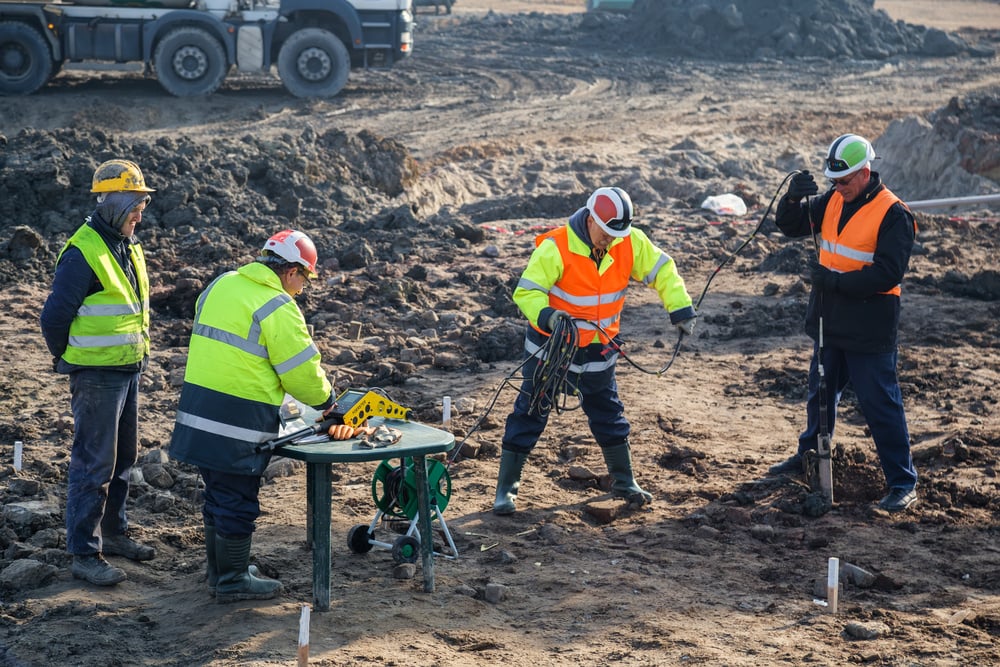The Only Guide for Geotechnical Engineering For Construction Projects
The Only Guide for Geotechnical Engineering For Construction Projects
Blog Article
The 30-Second Trick For Geotechnical Engineering For Construction Projects
Table of ContentsHow Geotechnical Engineering For Construction Projects can Save You Time, Stress, and Money.Rumored Buzz on Geotechnical Engineering For Construction ProjectsThe Main Principles Of Geotechnical Engineering For Construction Projects All about Geotechnical Engineering For Construction ProjectsOur Geotechnical Engineering For Construction Projects DiariesGeotechnical Engineering For Construction Projects Can Be Fun For EveryoneGetting The Geotechnical Engineering For Construction Projects To Work
Concepts and Technique of Ground Renovation. Ground Enhancement Principles And Applications In Asia. Design analysis in rock mechanics.Cengage Discovering, Stamford, 666 p. Atkinson, J., 2007. The technicians of dirts and foundations. Taylor & Francis, N.Y., 442 p. Drifting Offshore Wind Generators: Feedbacks in a Sea state Pareto Ideal Layouts and Financial Analysis, P. Sclavounos et al., October 2007. Nicholson, D, Tse, C and Dime, C. (1999 ). The Observational Approach in ground design concepts and applications.
The Geotechnical Engineering For Construction Projects Statements
Laboratory and field testing plays a crucial duty in this process. By drawing out examples from the planet's subsurface and using a suite of tests, geotechnical engineers can anticipate the behaviour of soil layers and review their suitability for different building and construction efforts. The significance of geotechnical design in civil engineering can not be overstated, attributable to several elements: The first action in any type of geotechnical study includes figuring out the dirt kind at the construction website.
The structure acts as the bedrock of any type of building and construction job. Picking the appropriate foundation type is a choice that hinges on the comprehensive analysis given by geotechnical engineering.

Geotechnical site investigation is an important action in the planning and implementation of any type of building project. It involves the collection and analysis of data related to the physical residential properties of soil and rock below a suggested construction website. This info is important for the design and building and construction of secure, steady, and sustainable frameworks.
Rumored Buzz on Geotechnical Engineering For Construction Projects
In this blog site, we will certainly dig into the relevance of geotechnical site investigation, its numerous components, and exactly how it profits construction jobs. Geotechnical website investigation, likewise known as subsurface expedition, entails a series of activities focused on identifying the dirt, rock, and groundwater problems at a construction website. The key objectives are to determine possible geotechnical risks, analyze the engineering homes of subsurface products, and give recommendations for the style and building and construction of structures, keeping wall surfaces, and other frameworks.
The desk research study assists in identifying potential geotechnical concerns and preparing the succeeding fieldwork. This entails observing the topography, drain patterns, existing structures, plant life, and any kind of indications of instability or erosion.
Our Geotechnical Engineering For Construction Projects Diaries
Shallow test pits are dug deep into to straight observe and sample the dirt and rock. This approach is valuable for examining the upper layers of the subsurface and recognizing near-surface risks. Non-invasive geophysical techniques, such as seismic refraction, ground-penetrating radar (GPR), and electric resistivity tomography (ERT), are made use of to map subsurface conditions and find anomalies.
Dirt and rock samples gathered throughout the area investigation are subjected to lab screening to determine their physical and mechanical homes. Usual lab examinations include grain size analysis, Atterberg limitations, compaction examinations, triaxial shear examinations, and Home Page debt consolidation examinations. These examinations offer important data for geotechnical evaluation and style. The information accumulated from the desk research study, website reconnaissance, area examination, and research laboratory testing are examined and translated to create a thorough understanding of the subsurface problems.
The key benefit of geotechnical website examination is ensuring the safety and security of frameworks. By recognizing the subsurface problems, engineers can create structures and various other architectural aspects that can endure the tons and environmental forces they will undergo. This decreases the danger of negotiation, decrease, and structural failure.
The Best Guide To Geotechnical Engineering For Construction Projects
This guarantees reliable and secure construction methods. Geotechnical website investigations are typically called for by building codes and policies.
This info is very useful for project managers, designers, and contractors in developing realistic timetables, budgets, and contingency plans. Geotechnical Engineering for Construction Projects. Skyscraper in a Coastal AreaIn a coastal city, a high-rise domestic building was intended on a website with believed loosened sand down payments and a high water table. A comprehensive geotechnical investigation, consisting of borehole exploration, CPT, and geophysical studies, was conducted
How Geotechnical Engineering For Construction Projects can Save You Time, Stress, and Money.
Based upon these searchings for, the structure design was modified to consist of deep heap foundations prolonging into stable strata, and ground renovation techniques, such as vibro-compaction, were carried out to reduce liquefaction threats. This positive method guaranteed the safety and security of the building while staying clear of expensive post-construction browse around here remediation. Infrastructure Development on a Sloping TerrainA major framework project, entailing the construction of a highway and bridges, was intended on an uneven surface with steep inclines.

The Leaning Tower of Pisa (Italy), a famous building marvel, is well known for its unintended tilt from considerable geotechnical issues. The tower's foundation was improperly developed to handle the soft, unpredictable soil underneath it, leading to unequal negotiation and its distinctive lean. Our globe is dotted with outstanding framework projectsfrom looming high-rise buildings to stretching bridgesall standing statement to the advancement of the various building equipment and techniques readily available.
Geotechnical engineering is a specific field within civil design that concentrates on studying the habits of planet materials. This branch digs deep right into the groundinvestigating how the soil, rock, and groundwater at a building and construction site can influenceand be affected bythe infrastructure that we set up on and into them. Prior to a solitary block is laid or a concrete foundation poured, geotechnical designers probe right into the earthgathering crucial information about the site's soil structure, rock structure, and groundwater degrees.
Geotechnical Engineering For Construction Projects Things To Know Before You Buy

is a tool utilized to assess the stability and load-bearing capability of stacks during setup, leveraging the principle of wave proliferation. It maximizes building and construction performance by giving real-time analyses, hence guaranteeing safe and effective pile structures. Among the practical applications of geotechnical engineering involves deciding and executing the appropriate methods for foundation construction.
Pile driving represents greater than the plain act of placing architectural aspects into the ground. However, it is a meticulously coordinated procedure of moving a structure's lots past the much less steady soil layers closer to the surfacedown to the extra significant strata that lie beneath. In the case of heap driving, take into consideration exactly how geotechnical engineers adeptly use this strategy to evenly disperse the structure's weight.
Report this page